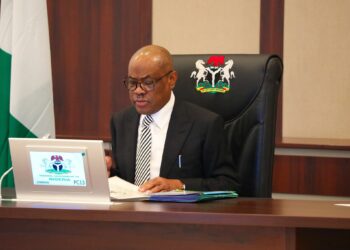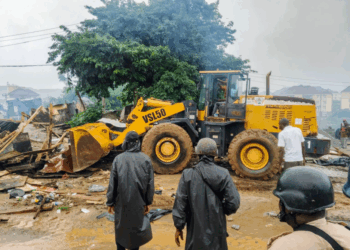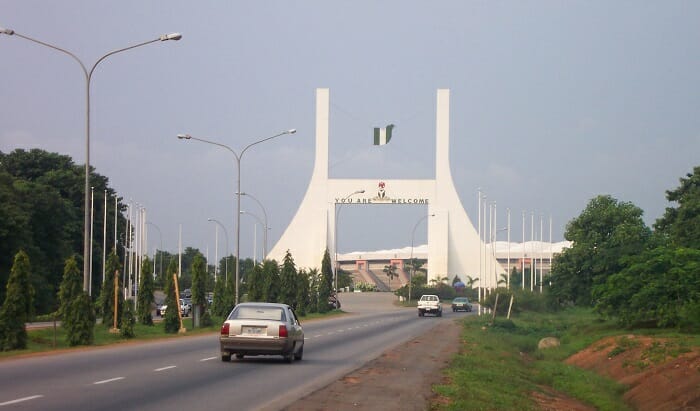The Federal Capital Territory (FCTA) has established a seven-member committee within the Department of Development to proactively address the issues of building collapses in Abuja.
After inaugurating the committee in Abuja, the Director of the department, Mr. Muktar Galadima, informed newsmen in Abuja on Wednesday that this initiative was taken as part of preventative measures against the recurring problem of building collapses in the federal capital.
In his words,
- “We don’t have to wait for another building to collapse before we act. That is why we set up the committee to help investigate structures that are not structurally stable for human habitation.
- “It is good to go around and identify these structures, conduct integrity tests, and where necessary provide for remedial measures and remove the structure if it is found not unstable.
- “The committee will be looking out for structures that visually may look stable but not and recommend an integrity test.”
Committee composition and duties
The committee comprises representatives from the Council for Registered Engineers of Nigeria, Town Planners Registration Council, Builders Registration Council, National Institute of Building, Road Research Institute, Standards Organization of Nigeria, and other relevant organizations.
Galadima emphasized that the committee’s responsibility extends beyond just visibly unstable structures, as it will also recommend integrity tests for buildings that may appear stable but pose hidden risks.
Additionally, the director revealed that the committee will provide recommendations on how to minimize the incidence of building collapses in the Federal Capital Territory. He also mentioned that the seven-man committee will also identify qualified professionals to conduct integrity tests.
The director referred to this mission as a “national call” and stated that the committee has an initial two-month timeline to fulfil its responsibilities.
Galadima issued a warning that any department officials engaging in unethical practices would face consequences per civil service regulations and existing laws.
Identifiable causes of building collapse
The committee’s chairman, Mr. Allabeh Ndirmbula, highlighted that building collapse can result from various causes, including materials, construction methods, design flaws, misuse, unqualified personnel, aging structures, and disasters, among others.
Ndirmbula, who once served as the president of TOPREC, said the committee will concentrate its efforts on Phase 1 areas of the FCT, specifically Wuse 1 and 2, Garki, and Asokoro.
Also, Mr Ajibade Adeyinka, a Deputy Director in Development Control and the committee’s secretary described the building industry as complex. He highlighted the interconnected roles of various professionals involved in constructing buildings and pointed out issues like compromises, quackery, and inadequate supervision and monitoring.
Commitment to building safety in the FCT
Ndirmbula stressed the committee’s commitment to prevent future building collapses, saying, “What has already happened, we can’t help it; but the future is what we are looking at. We want to make sure that from now on, we have a system that checks against building collapse.”
Similarly, Adeyinka noted that the committee’s objective is to assess existing structures, processes, and procedures within the industry and make necessary adjustments to address shortcomings.
In his words,
- “However, there have been a lot of compromises along the way, from the developer to the owner of the building to the professionals on site, issue of quackery and poor supervision and monitoring.
- “This committee intends to look at existing structures, processes, and procedures and look at how to rejig it if there are issues.
- “When you talk about building collapse, we always look at buildings under construction, but we are also looking at buildings that have been completed and occupied.”























As a matter of priority, this committee must include the eradication of the distribution and sale of steel rods that are clearly below gauge, within the FCT. Such rods carry labels from the manufacturers stating that they are of a certain gauge, while visually and from the user of calipers, they are way below the stated thickness.
The issue is a major one, given the central role that steel rods play in the structural integrity of buildings. The problem is also prevalent and widespread as more than 90% of available rods in the market in the FCT (and generally in the country) have this issue. Dealing with the problem is also easy, with the right commitment, as the manufacturers/importers are a handful, the distributors and sellers are in obvious and accessible places and validating the thickness specification is easily done on the spot..
Measures should include the closure of factories that these substandard rods are made from (easily identified from the labels on them), until they comply. Others include the ongoing seizure of products from the markets and auctioning them as feed materials to companies that are compliant in their manufacturing; closure of building sites wherever inspectors identify that such materials are in use, until necessary measures are effected and the materials replaced with the appropriate gauge.
Dealing with this issue should be an important addition to the tasks of the committee, given its appropriate constitution with members from the different organisations listed.